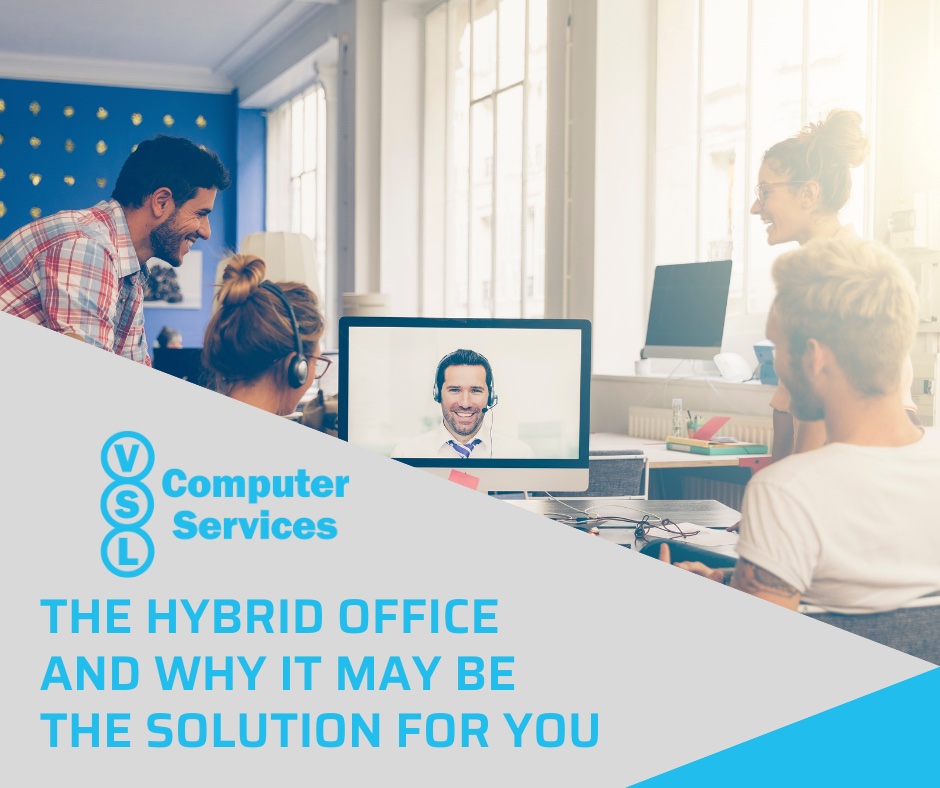
As the world opens back up and a sense of normalcy returns, what is your organization doing? Many organizations are returning to the office, while others found huge cost savings having their people work from home and are going to continue that way. Still, others are going hybrid, having some employees in the office while others work from home. How is your organization moving forward?
In this article, we’re going focus on the hybrid office solution, What is a hybrid office, the benefits of it, and how to make it work. Let’s get started!
What is a hybrid office?
At the start of the pandemic, we saw a large push to work from home (remotely). Organizations adjusted their networks accordingly to make remote work a viable option. We now know it works and many enjoy the flexibility it offers.
A hybrid office is a flexible workplace that affords the opportunity to work both remotely and in the office. The hybrid office is designed to support a distributed workforce.
The benefits of a hybrid office
While offering a plethora of benefits, we’re going to covering some of the popular benefits. During the Covid-19 pandemic, the hybrid offices had safety as the primary concern and benefit. The hybrid office helps to keep employees safe by limiting the number of people at the office at any given time and allowing everyone to work socially distant.
The hybrid office affords employees more focus while saving them time. Employees have more flexibility on when they can work, allowing them to work when is best for them. When working remotely, employees save time by not having to commute. This offers a healthy work-life balance. By adding flexibility, organizations help relieve stress from employees, making them happy and productive. If they need to work from home, they can, If they need to be in the office for something, they can.
Another benefit is using the right technology to increase productivity. Video conferencing has been around for a while, but its usage increased exponentially over the pandemic. Video conferencing affords a distributed workforce to meet “face-to-face” at any time, improving communication and collaboration. The benefit to technology when it comes to a hybrid office is when an employee may not have all of the technology needed to complete a job at home. When they need some technology to complete a job that they do not have a home, they may simply head to the office to complete the job using the right technology.
Making the hybrid office work
The right technology can make the hybrid office run smoothly, efficiently, and effectively. To do so, an organization needs to design the office to support a distributed workforce. You’ll want to start by investing in the video-conferencing platform that best suits your organization. There are many options when it comes to video conferencing; Zoom, Microsoft Teams, GoToMeeting, Cisco Webex, just to name a few.
Next, an organization will have to get the right equipment. This will entail setting up conferencing rooms with the proper video coverage, displays, sound quality, connectivity, and more for hybrid meetings (some employees in the office while others join remotely over video). Organizations will also want to make sure their remote employees have the right equipment to join remotely. Examples of this are laptops with a webcam, blue tooth headphones/earbuds, VoIP phone system, and more.
Hybrid offices moving forward
There is no question that hybrid offices offer many benefits. While a hybrid office may not be the best solution for every organization, with the right technology and setup, they are a great solution for many organizations.
Join us in our next article on how IT must adapt for the hybrid office.


